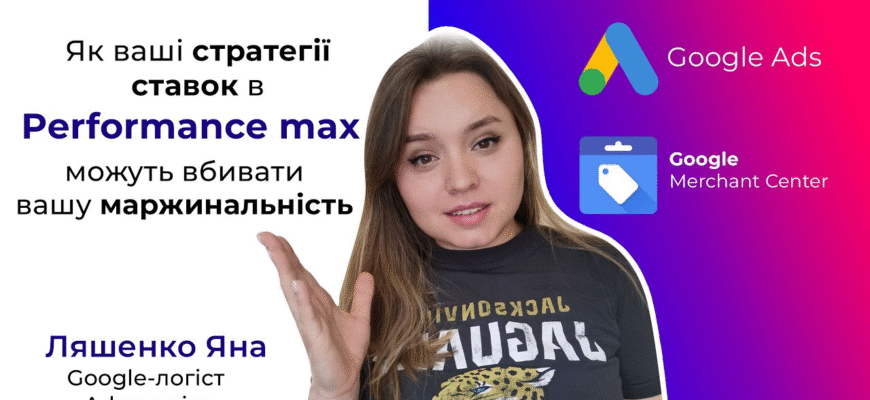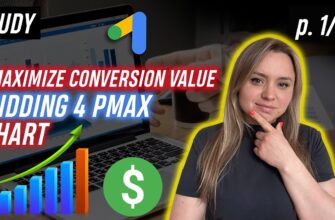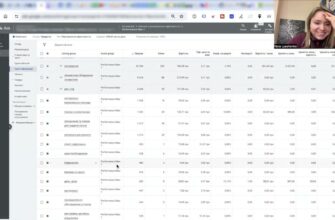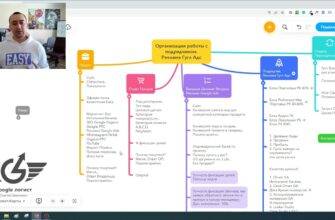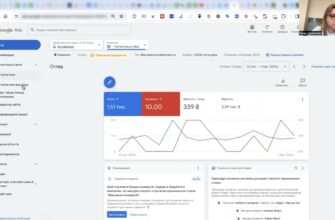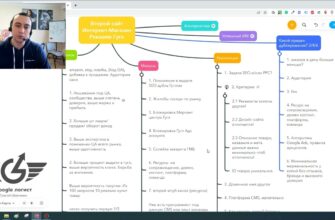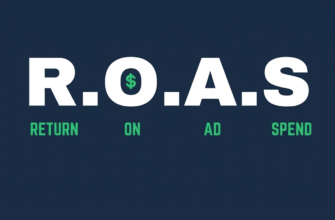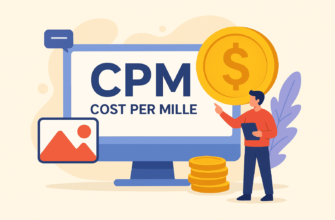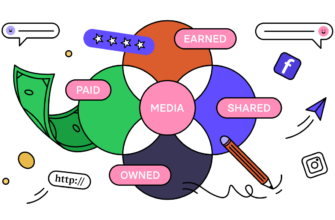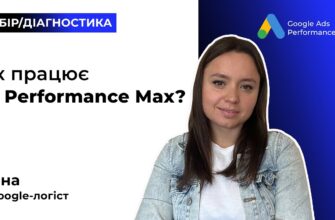- The problem of profitability in Performance Max
- What is ROAS in Performance Max?
- Why do PMaxes need at least a minimum ROAS?
- What are cross-holding bids?
- Results of the “Maximum clicks” strategy without indicating profitability
- Cheap vs. expensive traffic
- Tips for setting the starting values of profitability
- Why shouldn’t you trust Google’s profitability recommendations?
- Algorithm and actual reduction to ROAS
- Averaging results and the impact on efficiency
- How to calculate Break Even ROAS?
- Examples: how margin and price affect
- Variability of profitability in goods
- Is it worth setting ROAS below the breakeven point?
- Practice vs. theory – how does it work?
- Key indicators: Conversion Rate and average CPC
- Results
Hi everyone. My name is Yana Lyashenko and I am a Google logistician. I’m in the business of delivering targeted business audience with the right parameters. I scale online sales using the very, predominantly AI tools in Google Ads. And in today’s video, we’re going to look at how to set profitability for your Performance Maxes.
I think this video will be more useful for business owners who are trying to find clear instructions on the internet, in the vastness of YouTube, among other things. I’m not sure it would be for professionals. And plus, of course, in the process of support, you will also have to try to edit this profitability in certain values. But today is about how to set it in the first few queues and understanding how it works. I may even touch on more of a theoretical history to help you understand exactly how the profitability dimension works in Pmax-i advertising, at your startup. This will be talked about.
The problem of profitability in Performance Max
Why did I decide to address this particular set of questions after such a long YouTube hiatus? Because businesses that come for consultations often don’t understand how profitability works in Pmaxes. How important it is to understand their break-even point values of that very profitability. Basically, how profitability works within the Pmaxes. We’re going to look at a few nuances. Perhaps some of the information will be clearer to you.
How many calls and sales will I get by ordering contextual advertising from you?
I need to calculate the conversion of my website Describe
the task
in the application
Calculate potential ad revenue Google
contextual advertising calculator
And one more thing, a little bit of promo. Everything I tell on my YouTube channel is based on my own personal experience. It is not something I heard somewhere, it is not a Google reference or something invented, taken from outer space. The hypothesis is tested and a conclusion is made, which we use in our work. Your personal picture, perception, imagination about your ROAS in PMaxes may be different. Please share your own experience so that others will also know about it.
What is ROAS in Performance Max?
So what is ROAS in Performance Max? It’s a notional value of the ROAS you want to get out of this campaign. Why is it a conditional value? Because there is such a first nuance in PMaxes. Google does not operate with the concepts of ROI, profitability, revenue in your account. Even the revenue value is just called conversion value.
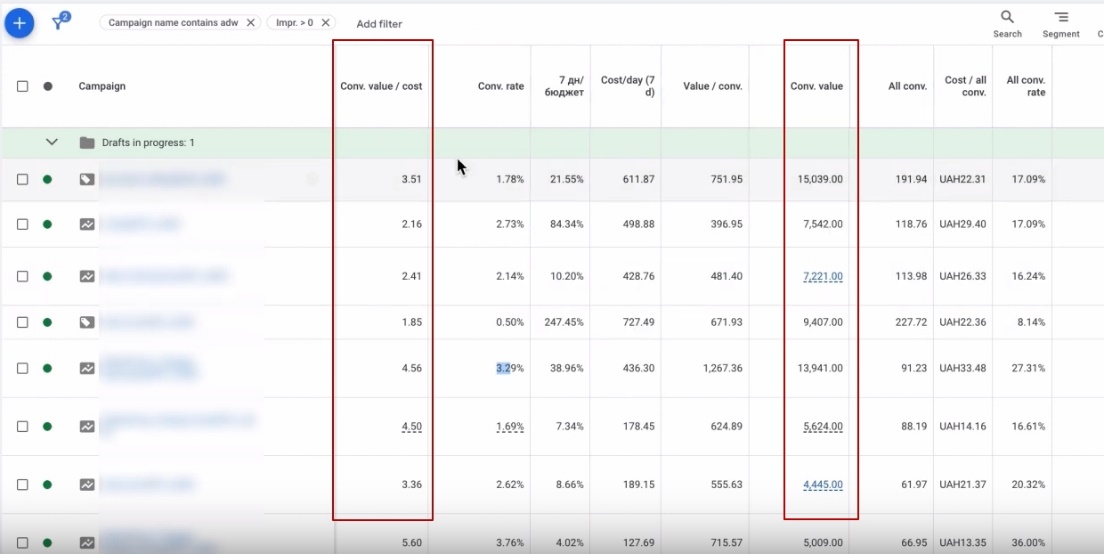
So if you look at your advertising account, you have the value in the conversion value column. And that ROAS actual is in the conversion value divided by cost column, so value divided by cost. This is a very key value.
The amount of profitability you set in your ad account will determine the number that AIsheka, who sits in those Pmaxes, will be aiming for. There’s no other way around it. Google doesn’t operate on your ROAS. It doesn’t compare them to other advertisers, what their actual ROAS is.
Why do PMaxes need at least a minimum ROAS?
Although this brings up a second point. The second nuance is that, as I said before, back in the era of Smart Shopping. God, the dinosaurs probably remember this Smart Shopping. The performances of my instructions on the Internet are better than a small profitability of Pmaxes, rather than no profitability at all.
This format of advertising campaigns – we don’t set a budget, we set the maximum value and spin around, collecting analytics – is not something I welcome. I told you, all my observations are based on tests. So, I won’t say that we tested the maximum value very much. No, we didn’t. The problem is with this strategy itself, it’s a kind of, you know, a cunning mousetrap, I would call it. Why? Let me try to explain. The point is that at least some profitability in the settings is better than no profitability at all. Now I will tell you what the tricky nuance is. You can profess it, believe it. If you don’t believe it, it’s your own business. I’m going to tell you why it’s important to set the profitability.
In general, the system of calculating the rating of your ad, which is why the system decides to display a product in advertising, not to display it, in what format, and what price per click you should pay, it determines based on this ad rating. Of course, they have now crammed a bunch of different parameters into it, but there are still two bases, the foundation of advertising remains the same as it was once invented. They haven’t brought anything new, they’ve tweaked it, improved it, but the foundation remains the same. These two foundations are the maximum CPC and the quality score.
What is the quality score? You can google it, read it. Usually, Google defines it only for search, because we can touch it there, it is not in the product. Why should we give you this analytics so that you ask more questions later? Are we fools to ask you this analytics, so that you ask even more questions, Google would probably say. The quality score is calculated based on your search queries. Unfortunately, the cost per click in PPC is not set manually. It is set by the same automated system, but the foundation remains the same. When calculating the actual CPC and ad rating, bids are taken into account. So, in each of the niches, including in the context of local markets, we imagine that Google has a very large coverage with Google ads, so you can imagine how many markets it has done this for. Google is actually doing something that no one else is doing. It has made a very cool advertising tool. Moreover, this AI-powered advertising tool learns within local markets, cities, oblasts, regions, states, European unions, and continents within niches. But there is a nuance.
What are cross-holding bids?
If you’re interested, you can even read about what third-party bidding is and how it negatively affects your auction in the litigation between the US Antitrust Commission and Google. But today we’re not talking about that, not about conspiracy theories. There are cross-holding bids in every market. You can even google “CPC threshold” right now. Google it now. Stop this video, pause it, and Google what it is. In simple terms, because Google describes it in a beautifully veiled way in the help, it is the minimum bid to enter the auction.
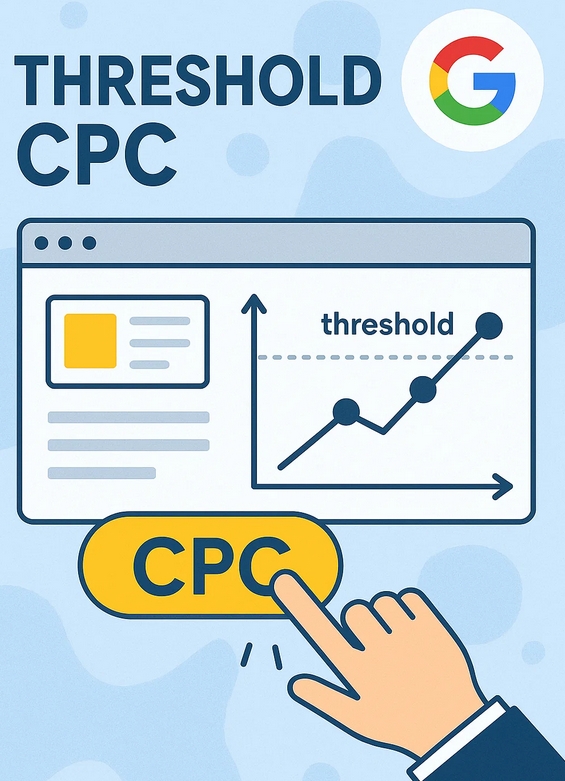
How does it know that someone needs $2, and someone needs 10 cents? There is this cross-holding rate. So, if we can’t influence manual bids anymore, because we don’t manually set the maximum limit of the CPC and so on. There is no such functionality in the account for you in the PMaxes. This is set by Google itself. It can set it higher or lower. You can google a bunch of stories when the budget was all eaten up in two clicks, and the cost per click was who knows what. Google said: “This is our automation, it calculates that this is the way it should be.”
Results of the “Maximum clicks” strategy without indicating profitability
But that’s not what we’re talking about today. Previously, these were manual bets, now they are profitability rates, and the foundation remains the same. But the concepts and mechanics of their settings have changed a bit. That is, when you don’t set these profitability rates, you are using the Maximum Clicks strategy. The maximum clicks strategy is when you give a budget, and I grab all the clicks I can find, as cheap as possible, but you don’t set limits to this strategy. That is, somewhere I found $10, somewhere $20, and somewhere 10 cents. Is that how good she is? Good job! That’s “Maximum clicks”. If you don’t set it a limit, it will be tempted to spend money on traffic that is not the cheapest. I need to look at the average, right? Not in super successful cases. If I were to draw this whole story that I’m telling only on super-successful cases, I would say: “Everything is great, trust Google, put money in your account, everything will be great.” But not everything is so successful, right? And I need to give you some information that you can practically apply.
When you don’t set this profitability, you don’t give it a limit, and moreover, you don’t even give its AI algorithm a clue as to which auctions to participate in, because you don’t set this limit. The maximum value is a strategy without a limit on profitability, it may work well in your account now, no problem with that, but show me at least one advertising account that would achieve the target KPIs and have budgets in the region of 200, 400, 500 dollars per advertising campaign. Let’s say none for the big ones. There are big accounts that come in: “We want ten, twenty ROAS in fact, to be there.” In the tests of previous teams, I have never seen it reach these figures without a limit on profitability. Not once. On small budgets, yes. But why doesn’t it work?
Because you don’t give the system guidelines for which auctions to enter. This is a consequential nuance, which is why we mention cross-holding rates. There is an auction that is below this cross-holding rate for this auction. And you pick up the pieces. Crumbs from what? From the main pie, which is available and which competitors share at rates equal to the three-holder rate or higher. There is a hot auction and a residual auction. What can we draw an analogy with? With, for example, an American project, Roofing services, a campaign that deals with roofs. Sometimes their CPCs are quite steep. There are some regions where the cost per click is 40, 50 dollars. Do you think American campaigns are willing to pay that? This cost-per-click is not something that comes out of the blue. Historically, it was formed on the basis of the fact that everyone was raising the rate. It’s like how, until the year 22, the system predicted the cost per click for the query “setting up contextual advertising” or “setting up Google shopping” to be somewhere around 2500 UAH at the old rate. Do you understand how the guys set the CPC in the auction? They think that by outbidding the highest bidder, they will get more sales.
So, back to the states. There are big advertisers, small advertisers, and they all came to this rate because, first of all, it’s stupid to come to such rates. Why is it stupid? It’s stupid. You think that by outbidding, you’re going to displace some of your competitors because you’re so good, you’re able to pay, instead of fighting with website conversions. There are so many manuals on how to raise bids, lower bids, and no manuals on how to increase website conversions. Why don’t website developers fight for this? I think it’s a blue ocean. Take it, grab them all, they will all be yours. But it would be foolish to do so in the first place, thinking that by outbidding, they would knock out competitors who are constantly changing. Instead of one, others come, they are constantly changing. And secondly, because historically, they are ready to pay this price. Because it’s a hot auction, there is a customer there, and there will be very few customers in the $2-3 CPC range.
Cheap vs. expensive traffic
Will that cheap auction with a cheaper CPC be more profitable than those with a CPC of $50 or $40? It’s not a fact, because if you have a good website in a hot auction, the conversion price may be even more profitable than when you are in a cheap auction. Why? Because a cheap auction can have a very low website conversion rate. It’s just that the conversion rate of this traffic will be low. So you have to generate many times more traffic than in a hot auction. Sometimes, you even trade in your awl for soap. Yes, it’s the same with Google shopping. When you don’t set a profit margin, you give this cross-holding rate for formation to everyone. That is, someone comes in and says, “Let’s make money, let’s overcharge.
There are guys who come in, for example, in dietary supplements, selling Solgar, Novedays, all these vitamins and Eicherbos, which led to this. There, the cost per click on some keywords is biting in the context of their conversion, because historically, the promotion strategy was illiterate. They thought they would knock out some small advertisers and be left alone. This is a strategy for a couple of months, then someone new will come in, and you still use PMaxes, they can cross auctions with each other, enter different stories, and so on. This is an endless story that can be discussed. This is a mission statement in advertising.
I don’t want anything to be done in advertising. There are clients with whom I have been working for years. We have been working since the 14th year, when the adwservice.com.ua domain was officially purchased. Over the years, we have clients who have been working with us. And I’ve seen it all, tried it, tested it, when a large client comes in who is ready to soak everything, and we test it, and we really see how we suffer from it, how we need to work several times harder to make the price reduction dynamics positive for us. If you kill the auction within a year, Google will definitely support you. It will only generate cool bids for itself. A new entrant has no choice but to start with low rates. They either need to set a treasury or even higher, they have no choice.
Tips for setting the starting values of profitability
Set the profitability. These are the same cross-holding rates. This is one of the reasons why the 800, 700, and even 1000 percent margin is a great fit in Ukraine. You can start with them, train your PPCs to work on them, and, for example, set a profitability of 800 in the market of, for example, France or Germany. And then you stand there and wait for those clicks to appear, which takes a long time. You can’t wait for weeks or months for Google to shuffle through the traffic options. Or it happens that the traffic is reduced to zero, there was some traffic, and then it completely bubbled up.
Why shouldn’t you trust Google’s profitability recommendations?
Answer me in the comments. Very often in consultations, this is a point that comes up. Most likely, anyone watching this video has already encountered this. When Google itself recommends the value of this profitability.
For example, you actually have 1800 there, it recommends 1300, you set this 1300 and the campaigns just stop – once and there are no impressions. This is a vivid example of the fact that the value that Google has drawn is too high for the bids at which your PPCs were working before. You need to wait a long time for it to adapt to this. But at this point, you lose the sales that you had before, whether they were profitable or not, these are the nuances that were in your account. This is the same thing.
It is better to set profitability, not the ones that Google recommends, of course, but at least some. We’re going to look at an example of how you can calculate profitability rather than no profitability at all. This is my message as a missionary to Google. A request to you. I know the Maximum Value strategy works for you, but don’t do Google a disservice. You are only giving the system a win, not you. It’s just that technically there will be conditions when it will be very difficult to scale. This will definitely happen on the big one, I’ve seen it on the small one. You can’t advertise for years without restrictions, it won’t work. Google does not understand what these restrictions are. We talked about it. This is an important nuance why at least some ROAS is important.
Algorithm and actual reduction to ROAS
The next nuance. In the last quarter of ’24 and the beginning of ’25, I have been very active in observing a relatively positive trend in bringing your actual profitability to the plan you set. What does this mean? Previously, the adjustment of this value was quite significant and took a long time, meaning that the game was played for a period of time. Nowadays, automation can bring results much faster. Just so you understand, the profitability value you set is visible on the screen, and it is very active, very fast, and tries to bring it to itself, to compare it with the fact. More precisely, it wants to compare the fact with the plan.
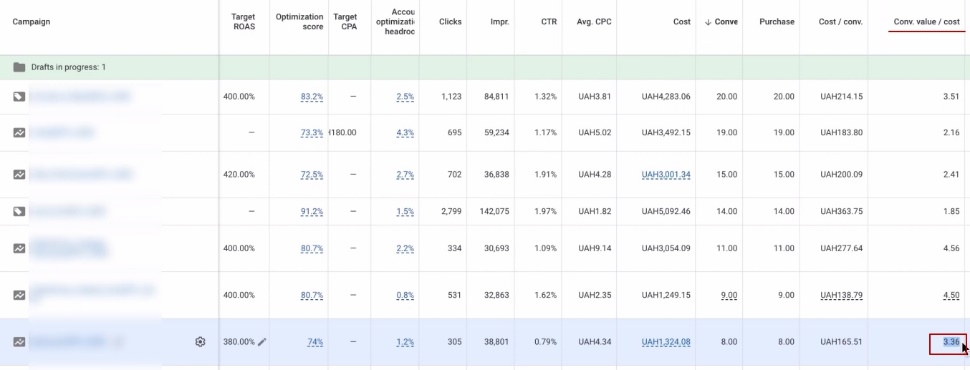
How many calls and sales will I get by ordering contextual advertising from you?
I need to calculate the conversion of my website Describe
the task
in the application
Calculate potential ad revenue Google
contextual advertising calculator
I’m a little bit behind – 3.36. Very quickly, in an ideal situation, he can bring it up to speed, equalize them. Is it critical or not? If you set a profitability of 200, and your breakeven point is at ten, it’s a story, so you understand. That’s why I recommend knowing your breakeven point and keeping an eye on it based on this nuance.
Averaging results and the impact on efficiency
The next nuance. Google likes to average values. If we set a value of 380, in order to bring it to you, it will very much average the value of the purchase. What does this mean? It means that some sales will be super high profitability, some will just have some expenses, and some will be almost identical to the profitability you set. Take this into account. It will average this value. That is, if you have 700% there and it gives exactly 700% and there is no margin for the top, this means that it most likely came to this value very quickly and you should closely monitor it if you need higher. Or conduct at least a primitive analysis on a product-by-product basis, looking at costs.
In fact, my profitability could be much higher if it weren’t for these 50, 42, less than 10. God, less than one dollar in costs, right? Maybe 40 UAH conversion, right? For example, 42 is almost €1 spent over two weeks on this product in this ad campaign.

Take this nuance into account. It gives you the flexibility to adjust this profitability. You can set it lower or higher. Play around with your profitability. The only criterion is that I would not adjust it in a significantly large amount. Either you choose a strategy of gradual increase, gradually – 5-10%, no more. Ні-ні-ні, оце раз-два на 100% вверх туди/назад, ви не відчуєте ефекту від коригування.
It also adapts quickly. I like the dynamics of what Google is doing with AI in PMax. In fact, it’s a very cool advertising tool, and there is no alternative, of course. I would like to go back to smart shopping, but it’s like scolding an automatic transmission while driving a manual when an automatic transmission is really more convenient. That’s why we also need to go with the dynamics, to keep up with it.
How to calculate Break Even ROAS?
Next. Calculate your Break Even ROAS value. Break Even ROAS is your break-even point. What do you need for this? You need to know your average price or in terms of different price segments and know the value of your margin. Just be careful, the margin doesn’t have to be the whole thing. There is, for example, a 30% margin and you take this value. No, you don’t. Look at your price tags and figure out where you can cut this margin, because this is the margin before advertising costs, and you will still have advertising costs, which will cut your margin. Think about it.

For example, I took $10, and I have a check sitting here. My margin is 30%. It can be less, it can be more. It’s all your internal business processes, and I can’t influence that. I just divided it in half. This is a value of 30% – you control how much percentage of your margin you are willing to give. You determine how much you are willing to give away, and then you will see after the fact whether you need to give him more or not. For example, I divided 30% of the net by 2 and got 15%. That is, I want to put 15% in my pocket. And I give 15% to Google. It’s pure, technical, primitive.
I will calculate the Break Even ROAS (break-even point) using the formula: unit divided by margin. Here I get 1 divided by 0.15 = 6.66, or if you multiply it by 100%, it’s 666%. What does this figure tell me? This figure tells me that if I have a conversion value divided by cost in the conversion value column, i.e. value divided by cost, of at least 6.66 and above, it means that I have fit into my 15% and even earned it. If it’s less, then I’ve already started to eat away at the 15% I wanted to put in my pocket.
The percentage by which you cut this margin depends on your price and your capabilities. In general, on average, from 30 to 70%, someone cuts this margin value. It all very much depends on the size of the check you have. Of course, on a lower check, you have to give more margin and cover it with turnover on a high check, so you can give less. Even on the prices, you can define your limit of the price per conversion. I took $20, divided it by my break-even point, 15% margin, 6.66, and got my price per conversion limit of $3 at $20 with a 15% margin.

If I have a 70% average check at a breakeven point of 6.66, I can already pay $10 per transaction. That’s an example for you of how you can move that price per conversion based on your margin. You are in control of it all. Somewhere you can do more, somewhere you can do less. Feel this profitability, at which more will be less. The whole secret of adjusting profitability is to know the value of the margin, know your check, and vary within these limits. There are no super secrets there. If you understand how to shuffle back and forth, what values to adjust, you will cover 70% of all situations. Of course, there are situations when you need high turnover or something else, but even there you can handle it and play around with the structure. This is what we discuss during consultations. Play around with your profitability values.
Examples: how margin and price affect
For example, I took 300% here, let’s say I have a price of $20, I took 300% of the breakeven. Suddenly I have something like that, the project I showed you.
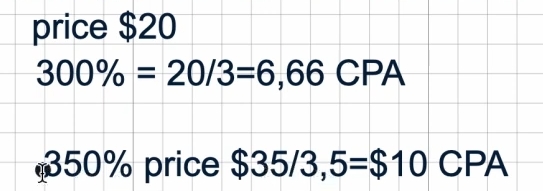
I take $20, divide it by my break-even point of three, and get a cost per conversion of 6.66. I’m always thinking in terms of sixes and twenties. I must have set a bad example. 6.66 CPA, which is the cost per conversion. It will be more convenient for you to see the cost per conversion. It is within these limits, not within these limits. For example, let’s take a break-even point of 350%. I divide $35 by 3.5 (for this 350%) and get $10 CPA. Here’s the math.
Variability of profitability in goods
Analyze within the price range. Perhaps you have products that three people buy at once. In this case, the receipt will play the role of priority, the average receipt, not the price. Because there are products that are sold by the meter or by the set, where you simply specify this price per set. Look at what you will calculate this margin from and test different profitability values within these margin values. This is the secret.
Is it worth setting ROAS below the breakeven point?
Is it possible to set profitability below the break-even point in general? For example, ours will be 350, or can we set it at 120? You can. What is the actual ROAS in this case? You need to think about whether it will be aimed at X2 or not. There are already a lot of other indicators for this. For example, you go in by product and see whether the price per conversion roughly fits into these values or not according to your calculation. If it does, because if you only reduce this profitability, right? We take this check of $20, we had a break-even point of 666%, and here we assign 300. The CPA will not be $3, but $6.66. Understand what it will target. The AI gun will target this costly part.
Practice vs. theory – how does it work?
It’s all in theory. I’m talking about a bare theory, but is it happening in practice or not? If you take a look, open the tabs “My products”, look at your values, profitability, you will see that I am in the top nine out of ten. Are there other situations? Cheaper or more expensive? Yes, of course, because Google doesn’t give you a guarantee that it will get that sale. Because the task of AI, roughly speaking, and how you teach it correctly, is to show up to the audience. Usually, how does this happen? It draws an approximate avatar of how a person makes a purchase decision on your website and tries to search for people who look like them on the Internet. The larger the statistical sample of conversions, the better it fits into these people. Of course, the smaller the sample, the more varied it can be, but that’s not the point. Its task is to show up on time to the right person, and it’s up to the person on your website to decide whether they will buy or not. Let’s be objective.
Key indicators: Conversion Rate and average CPC
Conversion Rate still plays a very important role. Another indicator to know that Yana is a nine out of ten when describing this is to look at your Conversion rate. Look at your Conversion rate.
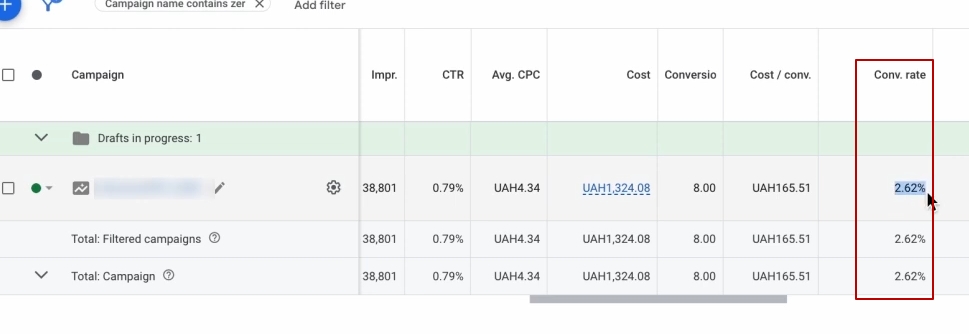
When it comes to the optimization process, you have two metrics that have a very strong impact on profitability: average CPC and conversion rate. By influencing only these two indicators, you have a very significant impact on profitability. Listen, not the size of profitability, not the size of the budget, signals, objects. These are two indicators. To influence them, you need to do a lot of iterations. But if you were to feel these two indicators in the edits, do a test for yourself and see how much it affects the profitability up and down. Because if your conversion rate is higher than certain values, because conversion rate you have to calculate according to your price list, your CPC account, the minimum value for your project. It must be there.
Let’s recall my videos on how to adjust CPCs at break-even points. Somewhere I have a video on my YouTube channel, it is very old, but conversion rate is the key there. It’s the same here, the minimum conversion rate is 1.5%. Yes, there are exceptions, for example, for niches with a very expensive check, with a very large price list, then it can be lower. For all such averages below 1.5%, it is immediately a disadvantage. But for some niches of projects, we need a minimum conversion rate even higher in order to have a smooth growth. And these are also moments of influence on the advertising campaign. But that’s not what we’re talking about today.
Results
Today, I wanted to look at the theoretical basis of how to play with this profitability, how to interact with it, how it affects you. Google simply takes your price list or average check, divides it by what you’ve delivered, and targets this expense part. Does it do it perfectly? Of course not. Because, first of all, technically, this bug goes back to standard shopping. It doesn’t know how to stretch the cost of all your products. He just doesn’t know how. The first product that hits in all projects, I see the same situation. A couple of products, almost an identical number of impressions, and all the rest are at minimums.
Why, you may ask. Because Google thinks in terms of ad ratings. For example, you sell Adidas sneakers, you have 100 pieces of these sneakers – they are all competitors with each other. Therefore, some are preferred, some are not. It’s just a technical nuance that you just have to work with. It’s not that you’ve set something up incorrectly, or that Performance thinks differently. Its fundamental basis does not change. You have to understand that no one has changed the principles that are laid down in it. This whole code that was once written is being tweaked, but the essence of it does not change globally. Even this Performance, which they released, they didn’t give an alternative to Smart Shopping, regular goods and PMax. No, they removed Smart Shopping so that everyone would switch to PMax. And the regular product, it can also perform quite well on profitability, on clicks, whatever. This is also done on purpose.
Remember, Google makes money in any case on what you do in your ad account. Your job is to think about how to take advantage of this and make sure that you are setting everything up correctly and going in the right direction.
This video is not the most universal. It is suitable for all situations. I won’t go into more detail on how to adjust profitability here. I’m sorry, it’s intellectual property. If you want, you can come to me for a consultation, and we’ll look into it. Or maybe in the future I will roll out an analog video to this one. These elements are partially touched upon in the Google Shopping marathon, where I am also considering Smart Shopping, but I’m not sure that it is universally suitable for everyone. Therefore, this is the basis that I have told you, know your margin in a certain price range and try lower, move less within it, don’t be afraid to move within them – this should be enough for you for now.
If you still have questions, the more specific they are, the happier I will be to shoot additional videos on how to adjust profitability. If you have a specific case, a situation, let’s discuss it.

